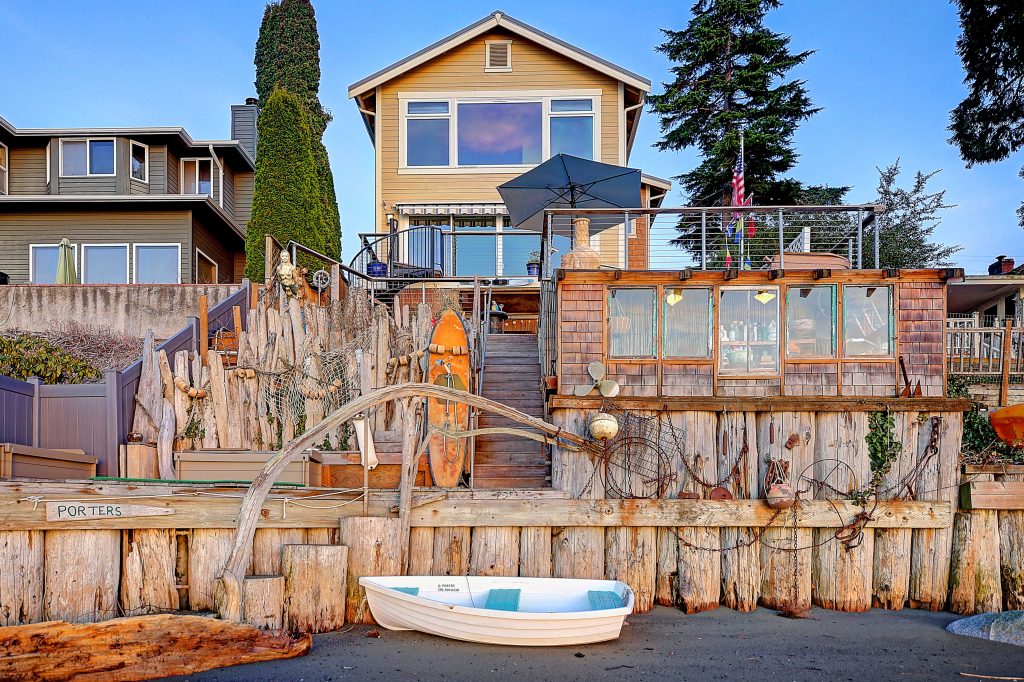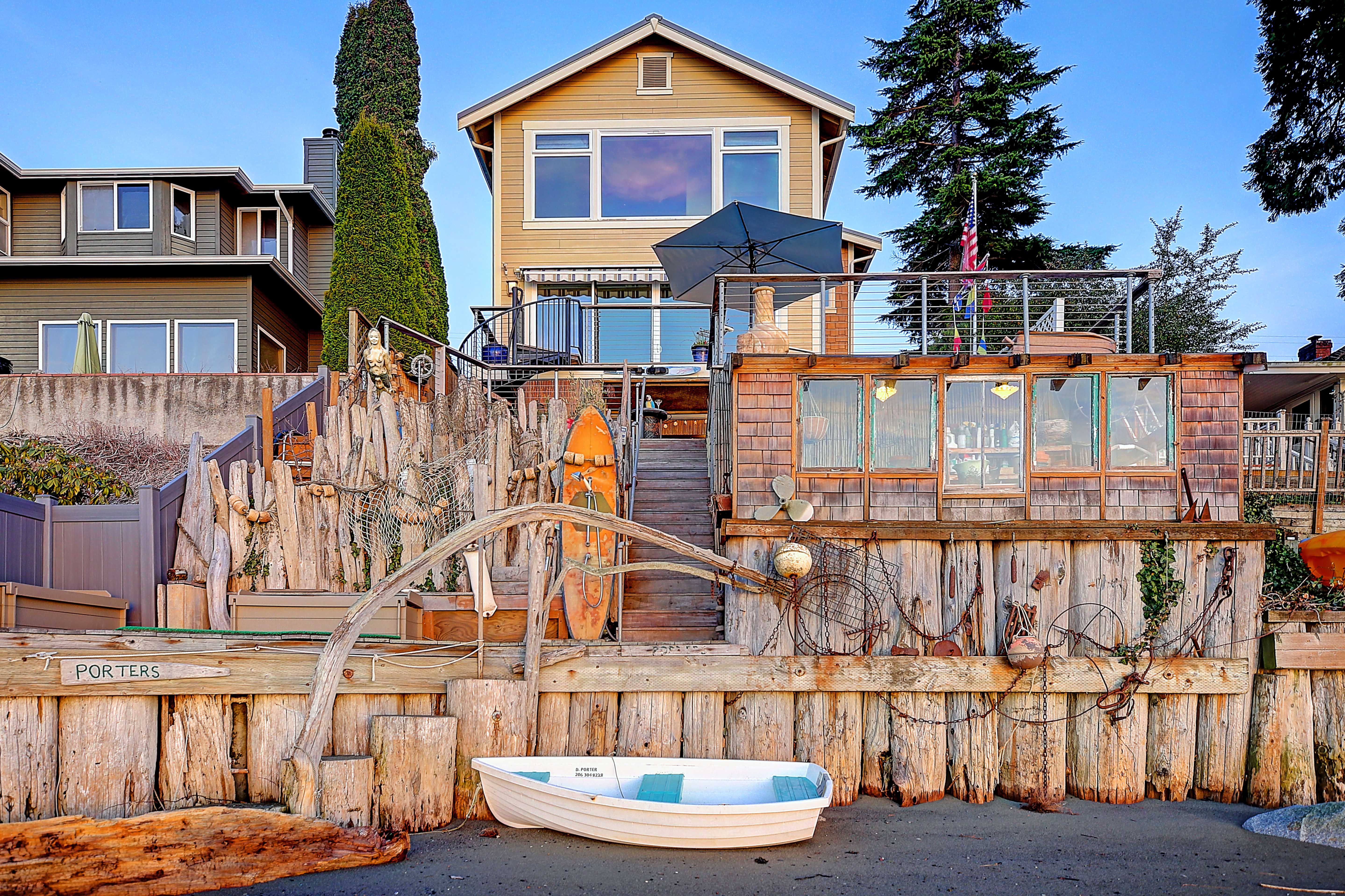
Now on the real estate market, this Warm Beach waterfront home is eco-friendly from top to bottom.
 By Evan Thompson | Saturday, May 11, 2019 1:30am
By Evan Thompson | Saturday, May 11, 2019 1:30am
It hit Dave Porter back in 2004 that he was a hypocrite.
After giving a speech to home builders and real estate agents about the importance of green design and building, Porter realized he didn’t practice what he preached.
“We had a decadent car and a house that was too big for our needs,” said Porter, a certified green building speaker who has toured the nation in the name of eco-friendly design. “It was time for a do-over.”
In 2005, Porter and his wife, Anna, sold their too-big house and, in 2007, started rebuilding a 100-year-old beachfront home in Warm Beach. They were determined to make it green from top to bottom — capable of meeting even the strictest green-home guidelines.
Their coastal-inspired, two-story home featuring a lighthouse cupola was named the 2008 Custom Home of the Year by the National Association of Home Builders and was given a Leadership in Energy and Environmental Design gold certification by the U.S. Green Building Council, among other national awards and designations.
Now it’s on the market for $1.45 million.
“It’s not only a fun and beautiful house, but it’s got this incredible background of green building when green building was just getting to be known,” said Linda Evans, the listing real estate agent for the property. “I don’t know of any other house that has this depth.”
Evans, who works for Windermere Real Estate Stanwood and Camano Island, said the 3,147-square-foot, three-bedroom, four-bath home is unique for having carefully chosen materials, such as insulation made from recycled blue jeans, formaldehyde-free doors and recycled glass countertops.
Snohomish County values the home at $744,900 for property tax assessments.
The Porters meticulously researched every piece of the house, keeping several questions in mind: Is it an earth-friendly product? Is it healthy or unhealthy? Does it help reduce their carbon footprint?
Not ones to waste anything, they salvaged more than 80 percent of their building materials from the original home, built in 1907, to keep it from going to the landfill.
The patio, walkway, parking pad and road easement are paved with pervious concrete, which drains water into the ground rather than flushing it into Port Susan nearby. They also have a rainwater catchment system, solar panels and a geothermal heat pump.
The couple, who are moving to Ashland, Oregon, to be closer to family, said they hope the next owners appreciate all the work that went into the house.
“It’s probably been the best experience we’ve ever had,” said Dave Porter, a sales manager for loanDepot. “It’s the longest we’ve ever lived in a home.”
The Porters wanted their experience to be educational for others, so they documented their rebuild, including every material used in the house, on their Going Green at the Beach website.
They’ve also opened their doors to about 5,000 people — including architects, realtors and elementary school students —for educational tours.
The green building materials are a big part of the price tag, Evans said, but not the only justification. The house has a number of other features, including a 1,100-bottle wine cellar, a detached guest retreat and lighthouse-themed cupola, which is a small dome on top of a roof.
But even the cupola, which has 360-degree views of the surrounding area and Port Susan, was designed to be green. The house doesn’t have mechanical air conditioning; open the windows in the cupola and fresh air funnels down to the rest of the house.
All of the green-home details still boggle Evans’ mind.
“Every time I go there, I learn something new,” she said.
 Facebook
Facebook
 X
X
 Pinterest
Pinterest
 Copy Link
Copy Link

